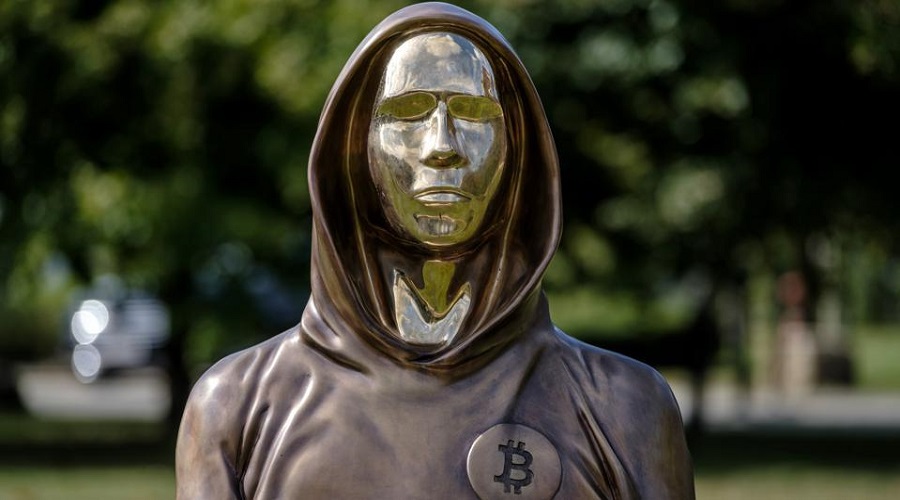Who is Nakamoto Satoshi? This article will provide fascinating information about Satoshi Nakamoto, and the process of his creation of Bitcoin as this mysterious figure. In 2009, a 36-year-old Japanese man claiming to be a person named Satoshi Nakamoto emerged on the global financial market, leaving behind 21 million Bitcoin before disappearing. More than a decade has passed, yet the effort to decipher the identity of this individual remains unresolved. This individual is known as Satoshi Nakamoto.
Table of Contents
ToggleWho is Nakamoto Satoshi?
The name Satoshi Nakamoto is the alias of an individual or group who conceived the Bitcoin currency and pioneered the first blockchain technology bearing the same name. Throughout the development of Bitcoin, Satoshi was highly active until their disappearance in December 2010.
Despite being named Satoshi Nakamoto, a moniker with a distinct Japanese flair and a self-declaration of Japanese descent, most speculations regarding the true identity of Satoshi have centered around software or cryptography experts hailing from the United States or Europe.

The creation of BTC is attributed to an inventive mind, who paved the way for a unique path in the field of digital currency
The majority of individuals must work diligently in order to attain financial resources. Certain individuals resort to deceitful or criminal means, such as counterfeiting or theft, to accumulate wealth. However, Satoshi Nakamoto chose a unique path for himself by inventing a new form of currency. On the evening of January 3, 2009, Satoshi pressed a button on his keyboard, creating a new currency known as Bitcoin. This currency is not physical, consisting solely of 31,000 lines of code and an accompanying notification on the Internet.
Satoshi’s invention, dubbed “digital gold,” is characterized by a finite supply of 21 million Bitcoins. Bitcoin “miners” validate transactions by leveraging computational power to solve complex mathematical problems, ultimately earning varying amounts of Bitcoin based on their computational efficiency.
Initially, the value of one Bitcoin was less than 0.01 USD, however, as merchants began to gradually accept this new currency, by the end of 2010, its value began to rapidly increase.
On May 22, 2010, the first Bitcoin transaction in the real world occurred when a man from Florida agreed to exchange 10,000 Bitcoin for two pizzas worth $25 each, leading to the creation of “Bitcoin Pizza Day”. Since then, the value of this currency has increased exponentially.

The reason for the birth of Bitcoin
In the year 2008, a global financial crisis occurred, causing even a large bank like Lehman Brothers to file for bankruptcy protection. This event demonstrated that even the largest banks in the world can make mistakes, highlighting the fragility of the modern financial system. The emergence of Bitcoin can be perceived as a reaction by Satoshi Nakamoto to this financial crisis, aimed at regaining control from the financial elite and providing an opportunity for participation in a decentralized financial system. The advent of Bitcoin is viewed as an attempt to take power out of the hands of the financial cognoscente and create a chance for people to be part of an uncentralized financial system.
Contributions of Nakamoto Satoshi
In 2008, Satoshi Nakamoto published an article titled “Bitcoin: A Peer-to-Peer Electronic Cash System”, wherein the utilization of a peer-to-peer network was outlined as a solution for the issue of “double-spending”. Cryptocurrency was not a novel concept at the time, and several attempts had been made to develop a cryptocurrency, however, these efforts proved unsuccessful. The advent of Bitcoin is considered a remedy for a significant problem. Cryptocurrency can be duplicated in multiple transactions, an occurrence that does not arise in physical currency as it can only exist in one place at a time. Since cryptocurrency does not exist in physical space, its utilization in a transaction does not necessarily eliminate it from the ownership of someone. Thus, it could be spent multiple times, leading to the concern of “double-spending”.
Previously, solutions to the issue of double-spending involved the use of third-party intermediaries who were reliable and would verify whether the owner had already spent the given digital currency. In most cases, such intermediaries, including banks, were able to handle transactions efficiently and with minimal additional risk. However, this trust-based model still posed a potential for additional costs and fraudulent risks. Thus, it is imperative to eliminate the human factor entirely. Automatic consensus and encryption mechanisms are currently the only means of overcoming human interference in financial systems.
Nakamoto presented a decentralized approach to transactions through the utilization of a ledger, network, Merkle roots, Merkle trees, timestamps, incentives, code, and consensus mechanisms. In a blockchain, timestamps are added to transaction information, while cryptographic techniques are employed to encode data. The encoded information, once verified, cannot be altered. The network must authenticate the validity of transactions based on a majority consensus mechanism known as proof of work.
Due to the distribution of transaction records across many nodes in the system, it is extremely difficult, if not impossible, for a malicious actor to gain enough control of the system to rewrite the ledger to their advantage. The security of blockchain records is maintained by the computational power required to reverse them, which discourages small-scale attacks. Hackers would need a network that is capable of verifying and generating blocks faster than the current network, and then they would need to introduce new blocks into the main network at the right time to overwrite it. Additionally, they would need to execute several concurrent blockchain attacks to succeed.
The individuals who speculate upon the identity of Satoshi Nakamoto
Ever since the birth of Bitcoin, the true identity of Satoshi Nakamoto has remained a mystery that has yet to be resolved. Craig Wright, Dorian Nakamoto, and Nick Szabo are individuals who have been speculated by the media to be the founder of Bitcoin.
Craig Wright
Craig Wright is an Australian computer scientist who is also recognized as the sole individual who publicly claims to be Satoshi Nakamoto.

In December 2015, Wired and Gizmodo, two separate magazines, published stories suggesting that Wright could be the inventor of Bitcoin. Although these stories were later revealed to be false, Wright continues to maintain that he is Satoshi Nakamoto.
Mr. Wright had submitted a copyright application for the Bitcoin Whitepaper and original Bitcoin code in the United States, and was granted the copyright for both in April of 2019. However, it was later revealed that anyone could submit a copyright application for these works. This discovery raises questions about the legitimacy and exclusivity of Mr. Wright’s copyright claims.
Wright initiated a lawsuit against British journalist Peter McCormack for defaming him by stating on his blog that Wright is not Nakamoto. As a result of this legal action, Wright was awarded a significant amount of compensation to cover the damages he incurred.
Wright also composed a missive to the Norwegian blogger “hodlonaut,” impelling him to retract his declarations that Wright is not Nakamoto, under the threat of legal action. Hodlonaut rebuffed Wright’s request, and the case was brought before the English court where it was eventually dismissed.
Dorian Nakamoto
In an article released by Newsweek in March 2014, it was revealed that the true identity of Satoshi Nakamoto is Dorian Nakamoto, an unemployed American physicist of Japanese descent residing in California.

However, Nakamoto promptly refuted this statement and responded to Newsweek’s article by stating that their story had been the source of a great deal of trouble and tension for both himself and his family.
He also stated that he had no involvement in creating, inventing, or working on Bitcoin and fully denies the report from Newsweek.
Nakamoto had been unemployed for more than a decade and even lacked access to the internet due to an inability to pay bills. Dorian remarked that he had not even heard of Bitcoin until his son mentioned it to him the following year, after being contacted by a journalist. This information was relayed in a formal and informative manner.
Nick Szabo
Nick Szabo, a computer programmer and cryptographer, developed one of the earliest decentralized cryptocurrencies called Bit Gold in the late 1990s. Although Bit Gold shares certain similarities with Bitcoin, it was not publicly disclosed until 2005.

Currently, many people regard Szabo’s Bit Gold project as one of the precursors to Bitcoin, and some individuals within the community believe that Szabo may be Satoshi Nakamoto. Even Elon Musk mentioned in a podcast that he believes Szabo to be Nakamoto.
According to Musk, it appears that Nick Szabo may be primarily responsible for the development of those ideas, more so than anyone else.
However, for his part, Szabo has continuously denied these rumors.
What is the Bitcoin holding balance of Satoshi Nakamoto?
It is believed that Satoshi Nakamoto currently owns around 1.1 million Bitcoins, which at present hold a value of several billions of dollars. It should be noted, however, that this number is merely an estimation. Due to the fact that the public wallet addresses belonging to Satoshi have not been fully identified, it is exceedingly difficult to track the Bitcoin that he owns.
The value of the Bitcoin wallet containing 1.1 million Satoshi Nakamoto originates from a model identified during the initial two years of the Bitcoin mining trend. The model was discovered by a block analyst named Sergio Demian Lerner, who is currently the Chief Scientist at RSK Labs, and is widely recognized as the Patoshi model.
In 2013, Lerner released a study revealing that a substantial proportion of the initial BTC issuance was mined by a single individual. Based on Lerner’s estimation, a lone mining tool could have processed approximately 22,000 blocks in Bitcoin’s first year and accrued a total of 1.8 million Bitcoin, 1.1 million of which remain unspent.
Summary
Satoshi Nakamoto is considered to be one of the key figures who laid the foundation for the development of the crypto market. Despite the fact that the true identity of Satoshi has yet to be confirmed, 247btc.net hopes that the information provided in this article will offer readers a comprehensive overview of this mysterious individual.
Who is Jed McCaleb? A biographical profile detailing the founder of Ripple, Mt. Gox, and Stellar
Recently, Ripple is a name that should not be unfamiliar to cryptocurrency users as it has been a long-standing name...
Read moreWho is Phil Town? A biography of the man who required only $1000 to become a billionaire
Although not being a prominent investor in million-dollar deals, Phil Town is known for his dedication and discipline in investment....
Read moreWho is Jihan Wu? This is a biographical profile of the person who is famously known as the king of cryptocurrency mining
Jihan Wu was once a well-positioned individual with a broad path to advancement in the financial industry. It's surprising that...
Read moreWho is Warren Buffett and what are his life and career accomplishments as a genius in the investment industry?
While other children of his age were playing with childish games, Warren Buffett earned his first dollars by selling chewing...
Read moreWho is Dan Larimer? Biographies of the founders of Bitshares, Cryptonomex, steemit, Block.one and EOS
Dan Larimer is a well-known figure among the cryptocurrency investment community during the 2017 - 2020 period. This is because...
Read moreWho is Nakamoto Satoshi? The enigmatic mask of the Bitcoin wizard
Who is Nakamoto Satoshi? This article will provide fascinating information about Satoshi Nakamoto, and the process of his creation of...
Read moreWho is Gavin Wood? Overview of Polkadot founders
On October 22, 2022, Gavin Wood made an official announcement via Twitter that his fellow co-founder of Parity, Björn Wagner,...
Read moreWho is Hayden Adams? And His Total Net Worth
Hayden Adams is the founder of Uniswap, a decentralized exchange (DEX) for Ethereum tokens. Let's take a closer look at...
Read moreWho is Chris Larsen? Biography of the world’s richest crypto billionaire
In today's article, 247btc.net invites readers to explore the life and career of Chris Larsen, one of the influential figures...
Read moreWho is Barry Silbert? He is the founder and CEO of Digital Currency Group
In a recent statement made by Cameron Winklevoss, chairman of Gemini, he stated that "Digital Currency Group (DCG) will not...
Read moreWho is Vitalik Buterin? He is a solitary genius and the creator of the Ethereum empire
Vitalik Buterin, the founder of Ethereum - the second-largest market cap blockchain platform worldwide after Bitcoin, displayed his innate talent...
Read moreElon Musk – Billionaires influence the crypto market through tweets
Elon Musk is known as one of the wealthiest billionaires in the world, having achieved great success with companies such...
Read moreWho are the Winklevoss brothers? Biography of Bitcoin billionaires Tyler Winklevoss – Cameron Winklevoss
Tyler and Cameron Winklevoss, who are identical twins, rose to fame for their lawsuit against Mark Zuckerberg for stealing the...
Read moreWho is Gary Gensler, the Chairman of the SEC, and his journey towards becoming a critic of cryptocurrencies?
Gary Gensler, who is the Chairman of the US Securities and Exchange Commission (SEC), has a background in teaching blockchain...
Read moreWho is Brian Armstrong? Biography of the founder and CEO of Coinbase Exchange
Coinbase was established in June 2012 by Brian Armstrong and Fred Ehrsam, with its main headquarters in San Francisco, California....
Read more










































